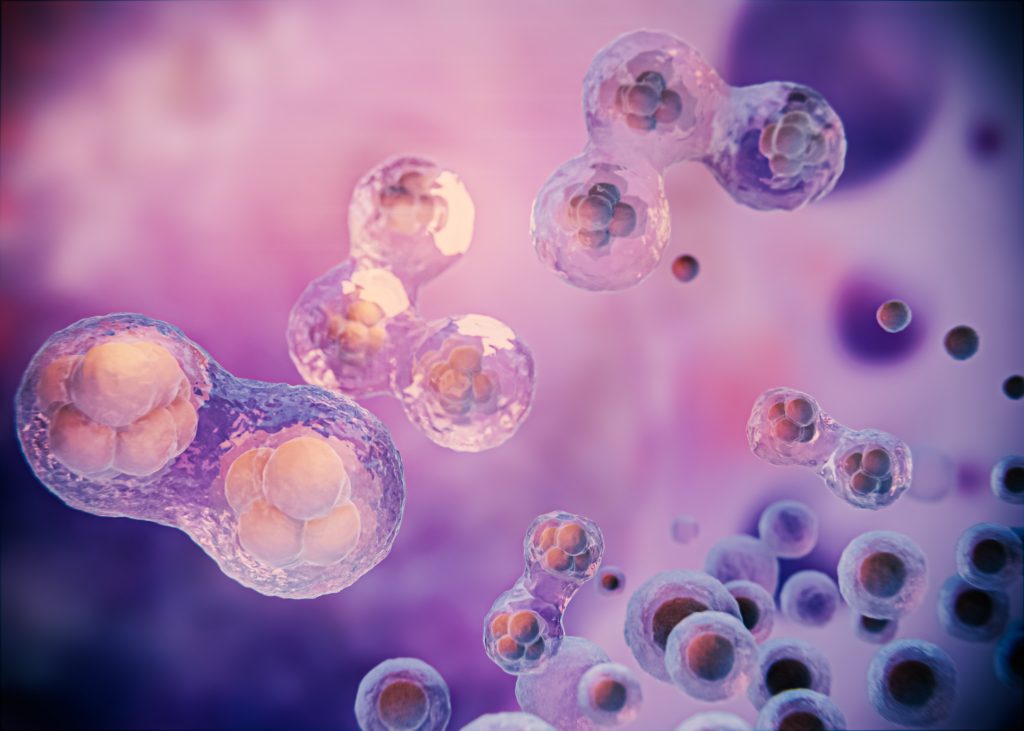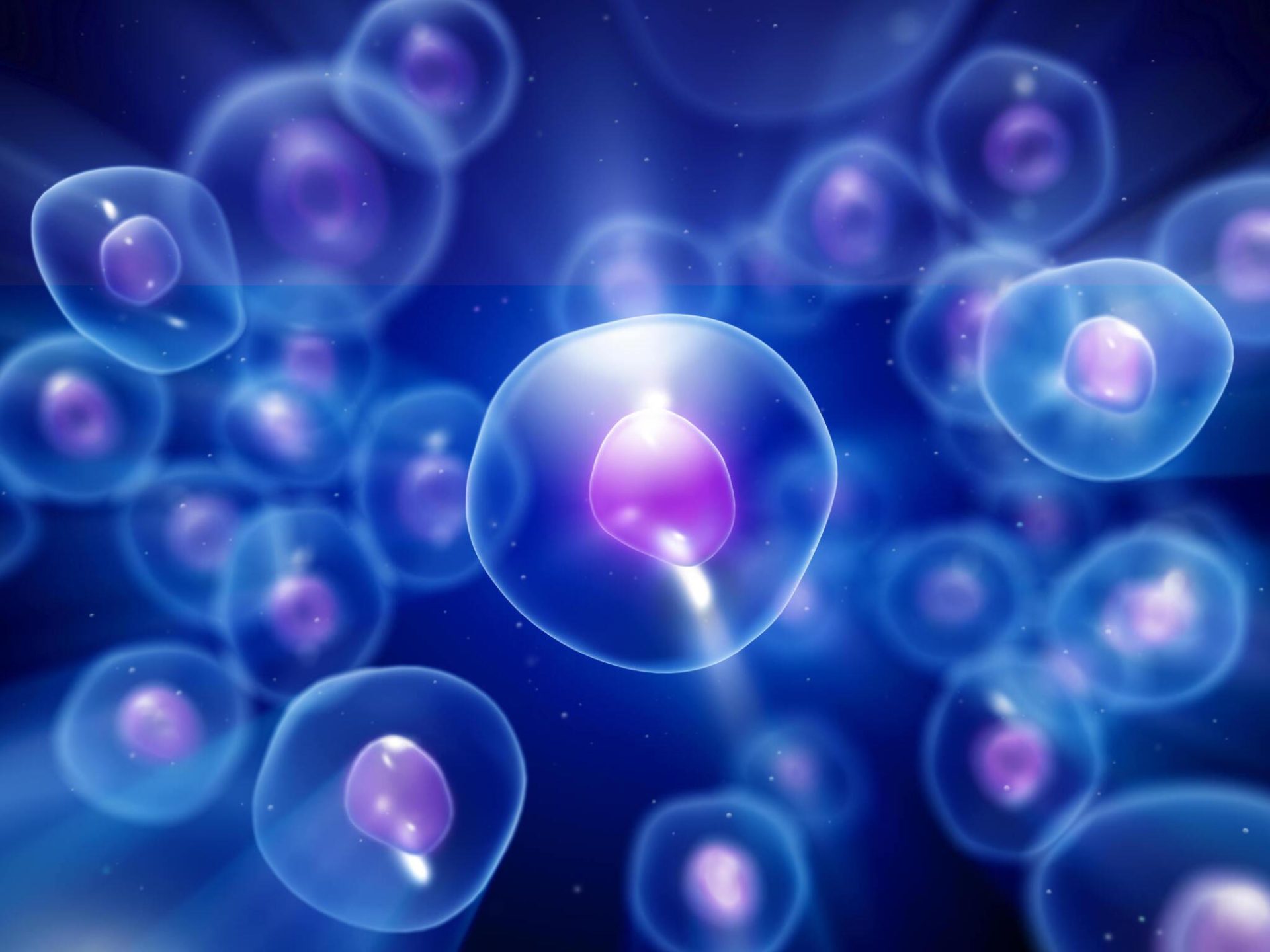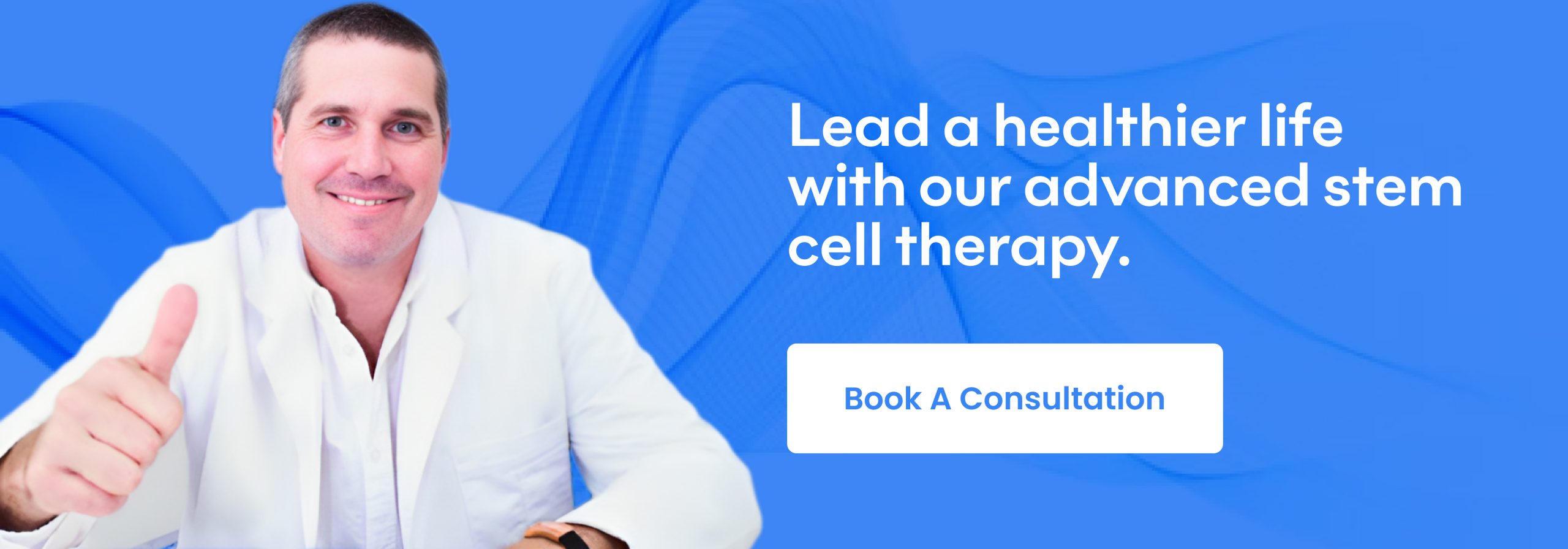The Power of Stem Cell Therapy: A Closer Look at Mesenchymal Stem Cells and Wharton’s Jelly
Stem cell therapy is revolutionizing the medical field, offering hope for conditions once deemed untreatable. This innovative approach harnesses the power of stem cells to repair, replace, and regenerate damaged tissues and organs. One of the most promising types of stem cells used in regenerative medicine is Mesenchymal Stem Cells (MSCs), particularly those derived from Wharton’s Jelly. This blog will explore the science behind MSCs, the unique properties of Wharton’s Jelly-derived MSCs, their immunomodulatory effects, and their potential in treating pulmonary fibrosis. Additionally, we will delve into clinical trials, the landscape of stem cell therapy in Mexico, and its costs, providing a comprehensive overview of this groundbreaking therapy.
What are Mesenchymal Stem Cells?
Mesenchymal Stem Cells (MSCs) are multipotent stem cells capable of differentiating into various cell types, including bone, cartilage, muscle, and fat cells. MSCs are prized for their ability to modulate immune responses, reduce inflammation, and promote tissue repair. These cells can be isolated from various tissues, including bone marrow, adipose tissue, and the umbilical cord.
Key Characteristics of MSCs
- Multipotency: Ability to differentiate into multiple cell types.
- Immunomodulation: Capable of modulating the immune system to reduce inflammation.
- Tissue Repair: Promote the repair and regeneration of damaged tissues.
- Homing Ability: Can migrate to sites of injury or inflammation.
What is Wharton’s Jelly?
Wharton’s Jelly is a gelatinous substance found within the umbilical cord. It surrounds the umbilical vein and arteries, providing protection and structural support. Wharton’s Jelly is rich in MSCs, which are easier to harvest and have higher proliferation rates compared to MSCs from other sources.
Unique Properties of Wharton’s Jelly
- Abundant MSCs: High concentration of MSCs, making it a potent source for regenerative therapies.
- Ethical Collection: Obtained non-invasively from donated umbilical cords post-birth.
- Young Cells: MSCs from Wharton’s Jelly are young and exhibit robust regenerative capabilities.
Wharton’s Jelly-Derived Mesenchymal Stem Cells (WJ-MSCs)
Wharton’s Jelly-derived MSCs (WJ-MSCs) are gaining attention for their exceptional regenerative and immunomodulatory properties. These cells can be used to treat a variety of conditions, including pulmonary fibrosis, a severe lung disease characterized by scarring of lung tissue.
Benefits of WJ-MSCs
- High Proliferation Rate: Rapidly divide and expand in culture.
- Potent Immunomodulation: Strong ability to modulate the immune response.
- Non-invasive Collection: Obtained ethically without harming the donor.
Read Also: Advanced Cost-Effective Stem Cell Treatment for Miami Patients
Immunomodulatory Effects of Wharton’s Jelly-Derived Mesenchymal Stem Cells
WJ-MSCs have remarkable immunomodulatory effects, which are crucial for treating autoimmune and inflammatory diseases. They can suppress pro-inflammatory cytokines and promote the production of anti-inflammatory cytokines, thus reducing inflammation and preventing tissue damage.
Mechanisms of Immunomodulation
- Cytokine Secretion: Release of anti-inflammatory cytokines.
- T-Cell Modulation: Suppress the activity of pro-inflammatory T-cells.
- Macrophage Polarization: Promote the transition of macrophages to an anti-inflammatory phenotype.
Mechanism of Action of WJ-MSCs on Pulmonary Fibrosis
Pulmonary fibrosis involves the thickening and scarring of lung tissue, leading to severe respiratory issues. WJ-MSCs can potentially reverse this damage through several mechanisms:
How WJ-MSCs Help in Pulmonary Fibrosis
- Anti-inflammatory Effects: Reduce lung inflammation, which is a primary cause of fibrosis.
- Anti-fibrotic Properties: Inhibit the processes that lead to scar tissue formation.
- Regenerative Capacity: Promote the repair and regeneration of damaged lung tissue.
Clinical Trials in the Field of Cell Therapy Using Mesenchymal Stem Cells in Pulmonary Fibrosis
Clinical trials are crucial in establishing the efficacy and safety of stem cell therapies. Several trials are underway to investigate the use of MSCs, including WJ-MSCs, in treating pulmonary fibrosis.
Key Findings from Clinical Trials
- Safety: WJ-MSCs have been shown to be safe with no serious adverse effects.
- Efficacy: Preliminary results indicate improvements in lung function and reduction in fibrosis markers.
Stem Cell Therapy: An Overview
Stem cell therapy involves the transplantation of stem cells to repair or replace damaged tissues and organs. It has shown promise in treating a variety of conditions, from neurological disorders to cardiovascular diseases.
Read Also: Unlocking the Potential of Stem Cells for Heart Failure and Stroke Recovery
Applications of Stem Cell Therapy
- Neurological Disorders: Treatment of stroke, spinal cord injuries, and neurodegenerative diseases.
- Cardiovascular Diseases: Repair of heart tissue post-myocardial infarction.
- Orthopedic Conditions: Treatment of joint and bone injuries.
Stem Cell Therapy in Mexico
Mexico has become a hub for stem cell therapy, attracting patients worldwide due to its advanced medical facilities and affordable treatment options. The country offers high-quality care with significantly lower costs compared to the United States and Europe.
Cost of Stem Cell Therapy in Mexico
- Affordability: Treatments in Mexico can be up to 70% cheaper than in the U.S.
- Quality of Care: Many clinics, such as Life Altering Stem Cell Therapy Institute, are American-owned and operated, ensuring high standards of care.
Key Clinics in Mexico
- Life Altering Stem Cell Therapy Institute: American-owned and operated, specializing in the use of Wharton’s Jelly-derived MSCs for various treatments.
Follow-up and Outcomes
Post-treatment follow-up is crucial to monitor the patient’s progress and ensure the success of stem cell therapy. Regular check-ups and assessments help track the efficacy of the treatment and manage any potential side effects.
Monitoring Progress
- Regular Assessments: Periodic evaluations to monitor improvement in symptoms.
- Patient Feedback: Collecting data on patient experiences and outcomes.
- Adjustments: Modifying treatment protocols based on individual responses.
Conclusion
Mesenchymal Stem Cells (MSCs), particularly those derived from Wharton’s Jelly, represent a promising frontier in regenerative medicine. Their unique properties make them ideal for treating a range of conditions, including pulmonary fibrosis. Clinical trials continue to validate their efficacy and safety, paving the way for broader applications. Stem cell therapy in Mexico offers an affordable and high-quality alternative for patients seeking advanced treatments. With ongoing research and clinical advancements, MSCs hold the potential to revolutionize medical care and improve the lives of countless individuals.
Stem Cells Vs. Progenitor Cells: A Comparative Study
Researchers focus more on various cell groups and their defining properties in stem cell biology. Regenerative medicine with stem cells aims to revolutionize treatments for various severe and chronic diseases. Alongside stem cells, the term “progenitor cells” is also gaining much interest and curiosity in the medical community.
This article will highlight the technical difference between the two cells and how each contributes to treating diseases.
Table of Contents
What are stem cells?
Stem cells are undifferentiated cells that can develop and multiply into any cell type in the body. The unique ability of stem cells to self-renew and recreate functional tissues has led to its promising applications in cellular therapies.
Stem cells have varying potential for differentiation. For instance, embryonic stem cells and umbilical cord tissue-derived cells are pluripotent, meaning they can differentiate into every cell type. Adult stem cells are multipotent in specific tissues or organs of the human body, such as bone marrow and adipose or fat tissue. Their differentiation potential is limited and specific to their sources of origin.
Read Also: Stem Cell Basics: What They Are And How Do They Work
What are progenitor cells?
Stem cell is a generic or umbrella term referring to all specialized and unspecialized cells capable of self-replicating through cell division. Progenitor cells arise from stem cells and are called their immediate descendants.
Through asymmetric cell divisions, stem cells renew and give rise to tissue-specific cells called progenitors, which differentiate further and multiply into limited numbers.
The primary difference between stem cells and progenitor cells is their differentiation capability. Unlike stem cells, progenitor cells can only differentiate into cells belonging to the same tissue or organ. To put it simply, they are unipotent cells with restricted cell potency. Progenitor cells aim for a final target for cell differentiation and renewal.
Comparison Between Progenitor Cells and Stem Cells
Although progenitor cells are a type of stem cell, they are more specific in their regenerative capability and function. Stem cells have the remarkable potential to differentiate and develop any cell type infinitely and possibly form a whole organ by regenerating tissues. On the contrary, progenitor cells can only grow and self-renew into a specific cell type, thus limiting its applicability in regenerative medicine.
Here is a comprehensive study of both types of cells based on their properties, types, functionalities, and benefits.
Properties of Stem Cells
- Stem cells are unspecialized cells that self-replicate indefinitely through asymmetric cell division.
- All stem cells have multilineage differentiation potential, meaning they can form all types of cells in the body.
- They can repair and regenerate damaged tissues while replenishing dying cells in the diseased area.
Properties of Progenitor Cells
- Progenitor cells are specialized stem cells specific to a particular tissue or organ.
- A progenitor cell can differentiate into its “target cell” and, hence, is unipotent.
- They can divide and self-replicate into a specific cell type a limited number of times.
- Through restricted cell differentiation, progenitor cells can create more progenitor cells or fully matured differentiated cells.
Types of Stem Cells
Stem cells are classified into four main types based on their collection sources.
- Adult stem cells
- Embryonic stem cells
- Fetal or umbilical cord stem cells
- Induced pluripotent stem cells
Types of Progenitor Cells
The undifferentiated stem cells transform into mature cells for blood, tissue, or organ development. During the transformation journey, the immature stem cells undergo cell division to give rise to various types of progenitor cells.
- Neural progenitor cells (cells in the central nervous system)
- Hematopoietic progenitor cells (blood-forming cells)
- Pancreatic progenitor cells
- Endothelial progenitor cells
Benefits of Stem Cells
When stem cells are introduced into the body through stem cell therapy, the new cells reach the diseased area, repair the injured cells, and act on surrounding cells to help the body heal naturally.
- Through tissue regeneration, stem cells can potentially treat neurodegenerative diseases, orthopedic injuries, spinal damage, and cardiac and pulmonary disorders.
- Stem cells have immunomodulatory and anti-inflammatory properties, effectively treating autoimmune diseases like Rheumatoid Arthritis, Lupus, Psoriasis, and Multiple Sclerosis.
- These cells are used in anti-aging treatment as they can regenerate skin cells and delay the process of aging, defying the frailty of aging.
Benefits of Progenitor Cells
Since progenitor cells can form only a single cell type, they can support cellular repair and maintenance in a specific tissue or organ.
- Progenitor cells serve as the body’s repair mechanism by replenishing special cells.
- They are beneficial in ongoing tissue maintenance in the blood, intestinal, nervous systems, and various organs in the body.
- They help faster recovery and tissue healing by replacing damaged or dead cells.
Read Also: Stem Cell Therapy: Ischemic Stroke Recovery Breakthrough
Therapeutic Applications of Stem Cells and Progenitor Cells
Continued research and advancements in regenerative medicine offered hope to patients with chronic and life-threatening conditions. Stem cells repair and regenerate damaged tissues from disease, injury, or aging. Progenitor cells are being explored alongside stem cells for their potential to treat diseases or injuries.
However, more research is needed to understand better how progenitor cells function on a molecular basis. On the contrary, stem cells have progressed from early research and experimental trials to therapeutic use.
Concluding Thoughts
Stem and progenitor cells are emerging medical research topics due to their unique capacity to differentiate and regenerate cells. Stem cells are currently utilized to provide stem cell therapies to treat patients suffering from various diseases via intravenous infusions or bone marrow transplants Cell-based regenerative treatments assist patients in recovering from diseases through tissue repair and healing.
Moreover, researchers are exploring the possibility of utilizing progenitor cells to generate diverse tissues, including blood vessels, heart valves, and organ-specific cells, for ongoing cell repair and maintenance in the body.
Life Altering Stem Cell Therapy Institute is a well-established stem cell center in Mexico, known for its cutting-edge treatments and highly qualified medical professionals. If you want to learn more about stem cell therapy and the conditions we treat, schedule a consultation with our experts today.
Healthy Habits to Amplify the Potential of Stem Cell Therapy
Embarking on a journey of optimal health involves a symbiotic relationship between cutting-edge medical interventions and mindful living. In this comprehensive guide, we delve into the world of healthy habits that not only enhance the efficacy of stem cell treatments but also contribute to an overall wellness journey. From proper nutrition and regular exercise to adequate sleep and stress management, discover the keys to unlocking the full potential of stem cell therapies.
What are Stem Cells? Understanding the Foundation:
Before we dive into the realm of healthy habits, it’s crucial to understand the foundation – what are stem cells? Stem cells are undifferentiated cells with the remarkable ability to develop into various specialized cell types. These cells serve as the body’s internal repair system, playing a pivotal role in tissue regeneration and healing.

Types of Stem Cells: Unveiling Nature’s Architect:
Stem cells come in various types, each with distinct properties and potential applications. Embryonic stem cells, derived from embryos, are pluripotent, meaning they can differentiate into any cell type in the body. Adult or somatic stem cells are multipotent, with a more limited differentiation capacity. Understanding these distinctions is essential for comprehending the diverse roles stem cells play in regenerative medicine.
What Stem Cells Are Used in L.A.T? Life Altering Stem Cell Therapy Institute Unveiled:
At the Life Altering Stem Cell Therapy Institute, we harness the regenerative potential of embryonic stem cells obtained from donated cord blood. This innovative approach ensures an extremely effective therapy, as embryonic stem cells possess the unique ability to create any specialized cell type needed by the body. Importantly, this methodology aligns with our ethical commitment to using a safe stem cell source.
Why Cord Blood? The Ethical and Practical Advantages:
The choice to use embryonic stem cells from donated cord blood at L.A.T holds both ethical and practical advantages. Cord blood, considered biological waste after birth, poses no risk to the mother or the child during its removal. This ethical approach addresses concerns associated with embryonic stem cell use while tapping into a potent source that would otherwise go to waste.

Healthy Habits To Enhance the Efficacy of Stem Cell Treatments:
1. Proper Nutrition: Fueling the Regenerative Engine
Proper nutrition lays the groundwork for successful stem cell therapy. A diet rich in nutrients, including vitamins, minerals, and antioxidants, provides the essential building blocks for cellular health. Incorporating a variety of fruits, vegetables, lean proteins, and whole grains ensures a well-rounded nutritional profile that supports the regenerative processes initiated by stem cell treatments.
2. Regular Exercise: Igniting the Regenerative Spark
Physical activity is more than a means of staying fit; it serves as a catalyst for regenerative processes within the body. Exercise enhances blood circulation, promotes the release of growth factors, and contributes to the overall health of tissues. Tailored exercise regimens, designed in consultation with healthcare professionals, complement the goals of stem cell therapy and promote optimal well-being.
3. Adequate Sleep: The Crucial Repair Phase
Quality sleep is a cornerstone of the body’s repair and regeneration processes. During sleep, cells undergo essential repair, and the body releases growth hormones that contribute to tissue healing. Adequate and restful sleep supports the effectiveness of stem cell treatments by providing the necessary downtime for cellular repair and optimizing the body’s healing capacities.
4. Stress Management: Creating an Internal Sanctuary
Chronic stress can hinder the success of stem cell therapy by contributing to inflammation and disrupting the body’s natural healing processes. Stress management techniques, such as meditation, deep breathing exercises, or mindfulness practices, create an internal sanctuary that supports the regenerative journey. The mind-body connection is a powerful force, and managing stress positively impacts the success of stem cell treatments.
Read Also: Stem Cell Therapy vs Traditional Treatments
Conclusion: Crafting a Lifestyle of Regenerative Wellness
In the pursuit of optimal health and the success of stem cell treatments, adopting healthy habits is paramount. Proper nutrition, regular exercise, adequate sleep, and stress management collectively create a lifestyle that harmonizes with the regenerative capacities of stem cells.
At the Life Altering Stem Cell Therapy Institute, our commitment to utilizing ethical and effective sources of stem cells, coupled with a dedication to patient well-being, exemplifies a holistic approach to regenerative medicine. By embracing healthy habits alongside cutting-edge treatments, individuals can embark on a transformative journey towards life-altering wellness, unlocking the full potential of stem cell therapies.




